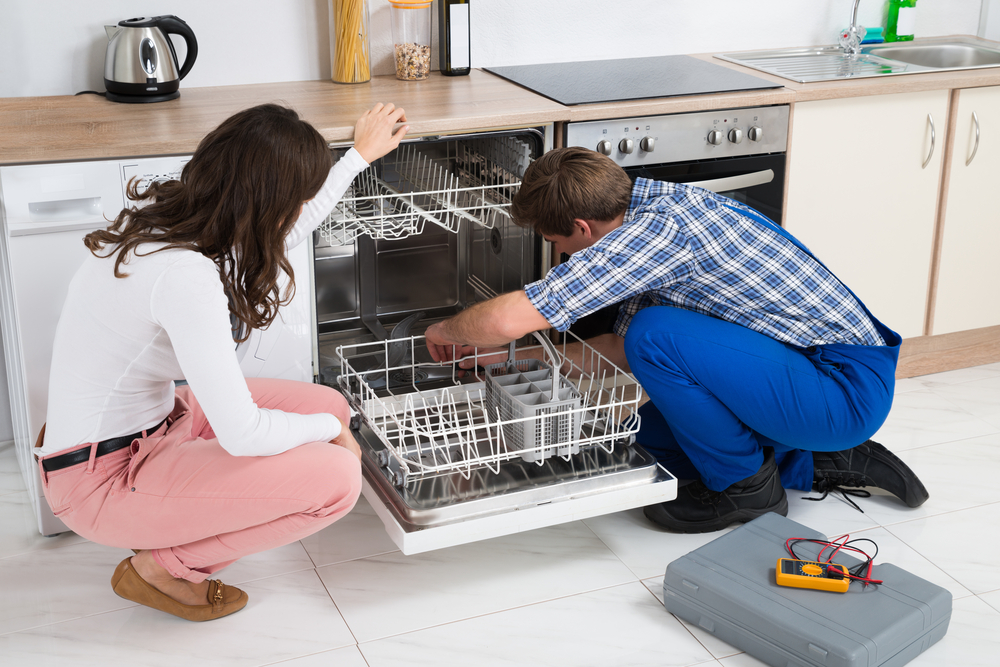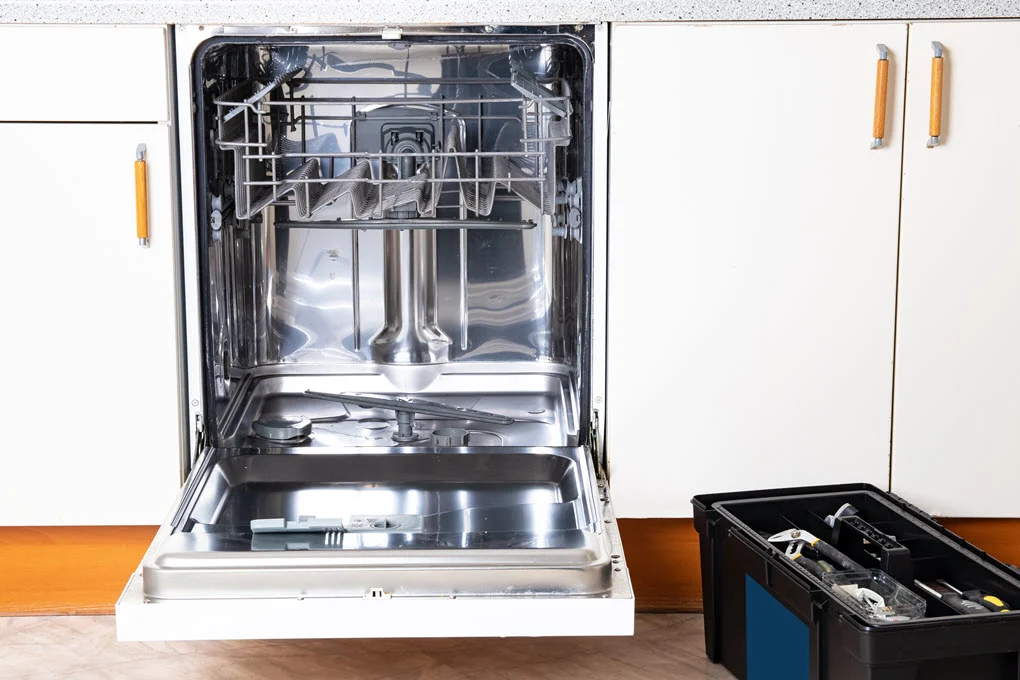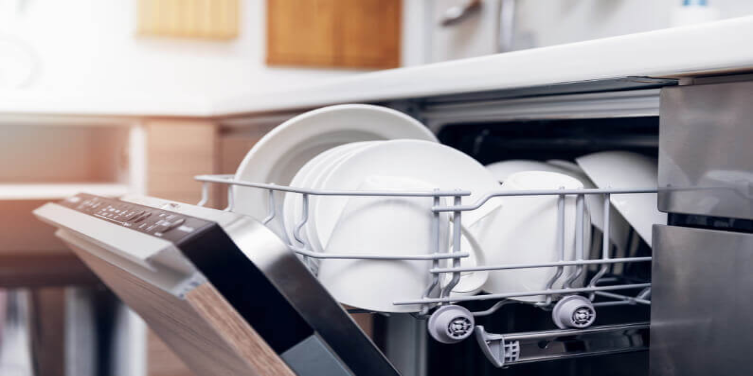
Don’t Let Your Dishwasher Break Down: Step-By-Step Dishwasher Maintenance Guide
Regular maintenance is essential to keeping your dishwasher running efficiently and prolonging its life span. This guide will provide you with easy-to-follow tips to help you avoid disaster.
Your dishwasher is a workhorse. It cleans your dishes day in and day out, so it’s important to make sure that it continues to function at maximum efficiency. And just like any other appliance, your dishwasher needs regular maintenance to keep it running smoothly and efficiently.
Here are a few reasons why regular dishwasher maintenance is so vital:
- It extends the lifespan of your dishwasher. When you properly maintain your dishwasher, you’re helping to prevent wear and tear on the components. This helps your dishwasher last longer and saves you money on repairs down the road.
- It improves the cleaning performance of your dishwasher. When your dishwasher is properly maintained, it’ll clean your dishes more effectively. This means that your dishes will come out sparkling clean, every time.
- It prevents odors and buildup. If you don’t properly maintain your dishwasher, it can start to develop odors and buildup. This can make your dishes smell bad and can also lead to performance problems.
By performing some simple maintenance steps, you can help keep your dishwasher running better for longer—for years to come.
So let’s break it down and talk about exactly how to make that happen.
How Often Should You Perform Regular Dishwasher Maintenance?
The answer depends on how often you use your dishwasher. But here’s a simple rule of thumb formula to answer the question:
- If you use your dishwasher daily, you should probably perform maintenance once a month.
- If you use your dishwasher less often, you can probably get away with performing maintenance every few months.
It can also be highly beneficial to hire a professional appliance repair service to help you with some of the more intricate details of regular maintenance. For example—we here at Denver Appliance Repair could come out once or twice a year to help you do a deep clean and really make sure that your dishwasher is in tip-top shape and working order.
Alright. Now let’s talk about the basics, and teach you how you can perform some vital maintenance steps on your own dishwasher, right from home, starting today.
Looking for Professional Repair?

5 Steps For For Regular, Preventative Dishwasher Maintenance
- If there are large pieces of food on your dishes, you should remove them before putting them in the dishwasher. These pieces of food could clog the dishwasher’s filters or prevent the water from reaching all of the dishes.
- If you have hard water, you may want to rinse your dishes before putting them in the dishwasher. Hard water can leave a residue on your dishes, and rinsing them can help to remove this residue.
- If you’re using a dishwasher with a weak water jet, you may want to rinse your dishes before putting them in the dishwasher. This will help to ensure that the dishes get clean.
- Locate the filter. The filter is usually located in the bottom of the dishwasher, near the drain. It may be a single filter or a two-part filter.
- Remove the filter. To remove the filter, you may need to twist it or turn it counterclockwise.
- Inspect it. Look for any food particles or debris that may be clogging the filter. If you see any debris, remove it with a soft brush or a toothpick.
- Clean the filter. You can clean the filter with hot soapy water or a dishwasher cleaner. Rinse the filter thoroughly after cleaning.
- Replace the filter. Once the filter is clean, replace it in the dishwasher.
3. Maintain The Door Seals If your dishwasher door seals start to go bad, you’ll end up with not only a malfunctioning dishwasher—but also a puddle (or maybe even a flood) of water on the floor every time you run it. Thus, performing these basic door seal maintenance steps is crucial:
- Locate the door seals. The door seals are usually located around the perimeter of the dishwasher door. They are made of a flexible material, such as rubber or silicone.
- Inspect the door seals. Look for any cracks, tears, or other damage. If you see any damage, the seal may need to be replaced.
- Clean the door seals. You can clean the door seals with a mild soap and water solution. Be sure to dry the seals thoroughly after cleaning.
- Apply a lubricant to the door seals. You can use a silicone lubricant or a food-grade lubricant to help keep the door seals flexible and prevent them from drying out.
Clean the door seals regularly.
The frequency of cleaning the door seals will depend on how often you use your dishwasher. If you use your dishwasher daily, you should probably clean the door seals once a month. If you use your dishwasher less often, you can probably get away with cleaning the door seals every few months.
4. Clean The Spray Arms Performing regular maintenance on the spray arms will prevent the buildup of odors, improve cleaning performance, and extend the life of your dishwasher. Here are the basic steps for how to do it:
- Locate the spray arms. The spray arms are usually located in the bottom of the dishwasher, near the top of the racks. There is usually a top spray arm and a bottom spray arm.
- Remove the spray arms. To remove the spray arms, you may need to twist them or turn them counterclockwise.
- Inspect them. Look for any food particles or debris that may be clogging the spray arms. If you see any debris, remove it with a soft brush or a toothpick.
- Clean the spray arms. You can clean the spray arms with hot soapy water or a dishwasher cleaner. Rinse the spray arms thoroughly after cleaning.
- Replace the spray arms. Once the spray arms are clean, replace them in the dishwasher.
Clean the spray arms regularly.
The frequency with which you should clean the spray arms will depend on how often you use your dishwasher. If you use your dishwasher daily, you should probably clean the spray arms once a month. If you use your dishwasher less often, you can probably get away with cleaning the spray arms every few months.
5. Keep It Running A lot of people don’t realize this—but if you don’t use your dishwasher regularly, it’s more likely to break down. This is because the components of the dishwasher can start to dry out and become brittle if they are not used regularly. This can lead to leaks, malfunctions, and even the need for major repairs.
Here are some tips to help prevent your dishwasher from breaking down if you don’t use it regularly:
- Run a cleaning cycle once a month. This will help to remove any buildup of food particles or debris.
- Use the correct amount of detergent. Too much detergent can leave a residue on your dishes.
- Clean the racks regularly. Food particles can build up on the racks and cause odors.
- Keep the interior of the dishwasher clean. Wipe down the interior after each use.
- Inspect the filter regularly. If the filter is clogged, it can prevent the dishwasher from working properly.
- Store your dishwasher in a cool, dry place. This will help to prevent the components from drying out.

Advanced Cleaning And Dishwasher Maintenance
Use Acid to Remove Calcium Buildups and Clean Out Your Drain Housing
Dishwashers use heated water to clean dishes, which can leave behind calcium deposits over time. These deposits can build up in the drain housing, which is the part of the dishwasher that drains the water out. If the drain housing is clogged, it can prevent the dishwasher from draining properly, which can lead to problems such as suds overflow, poor cleaning performance, and even damage to the dishwasher.
To remove calcium deposits from the drain housing, you can use a mild acid solution.
Some common acids that can be used for this purpose include:
- Vinegar
- Lemon juice
- And citric acid
You can mix one part acid with two parts water to create a solution.
Once you’ve created the acid solution, pour it into the dishwasher drain housing. You may need to use a funnel to get the solution into the housing. Let the solution sit for about 30 minutes, then run the dishwasher on a normal cycle. The acid solution should help to dissolve the calcium deposits and clear the drain housing.
It’s important to note that you should not use harsh acids, such as muriatic acid, to clean the drain housing. These acids can damage the dishwasher.
Here are some safety precautions to take when using acid to clean the drain housing:
- Always wear gloves and eye protection when working with acids.
- Do not mix acids with other chemicals.
- Work in a well-ventilated area.
- Dispose of the acid solution properly.
By following these safety precautions, you can help to prevent accidents and injuries.

If Your Dishwasher Is Connected to Garbage Disposal - Clean It
If your dishwasher is connected to your garbage disposal, it’s important to clean your garbage disposal as part of your regular dishwasher maintenance. This is because food particles and debris from the dishwasher can build up in the garbage disposal and cause problems.
Here are some of the problems that can occur if you don’t clean your garbage disposal regularly:
- The garbage disposal can become clogged. This can prevent the dishwasher from draining properly, which can lead to suds overflow, poor cleaning performance, and even damage to the dishwasher.
- The garbage disposal can start to smell bad. Food particles and debris that build up in the garbage disposal can start to decompose and emit foul odors.
- The garbage disposal can become damaged. If food particles and debris build up in the garbage disposal, they can grind against the blades and cause them to become dull or even break. This can damage the garbage disposal and make it difficult to use.
To clean your garbage disposal, you can use a few different methods. One method is to run a garbage disposal cleaner through the disposal. Another method is to use a mixture of baking soda and vinegar. You can also clean the garbage disposal by hand with a brush and soapy water.
It’s important to clean your garbage disposal regularly, even if you don’t use it very often. This will help to prevent problems and keep your dishwasher running smoothly.
Here are some tips for cleaning your garbage disposal:
- Turn off the power to the garbage disposal before you start cleaning. This will prevent you from accidentally turning it on while you’re cleaning it.
- Remove any large food particles from the disposal before you start cleaning. You can use a spoon or a spatula to remove these particles.
- Pour a cup of baking soda into the disposal. Then, pour a cup of vinegar into the disposal. The baking soda and vinegar will react and create a fizzing action that will help to clean the disposal.
- Turn on the garbage disposal for a few seconds. This will help to flush out the baking soda and vinegar.
- Rinse the disposal with hot water. This will help to remove any remaining baking soda and vinegar.
By following these tips, you can help to keep your garbage disposal clean and prevent problems.
Maintaining your dishwasher does take a little bit of extra time and effort. But it’s well worth the trouble. And you’ll find that it will seriously impact the lifespan of your appliance in a positive way.
We at Denver Appliance Repair have been helping our customers maintain their dishwashers for years, and we’d be happy to take a look at your unit and see if some regularly scheduled professional maintenance (once or twice a year, on top of your own personal maintenance initiatives) could potentially save you hundreds or even thousands of dollars in the future.
Schedule an appointment today!
Book a call today to get a skilled technician out to help you as soon as possible!